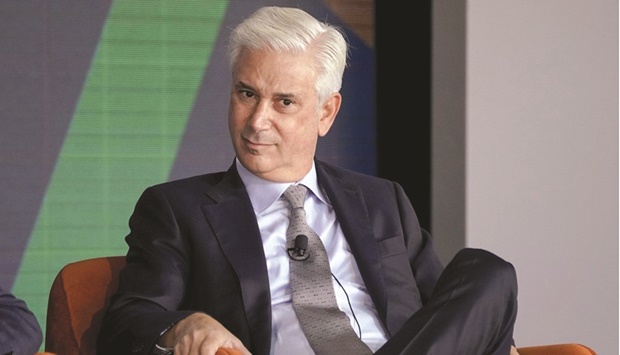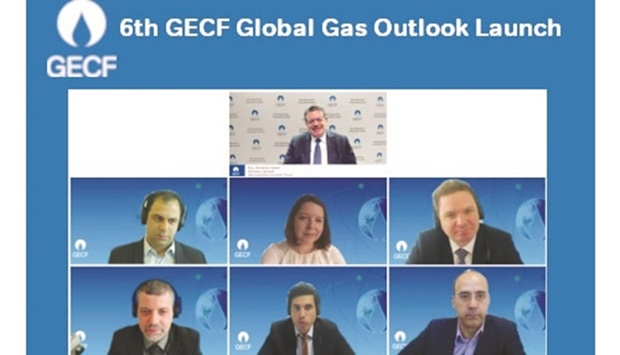Ο πόλεμος και η προβληματική αναζήτηση της Ευρώπης για ενεργειακή ασφάλεια


OPINIONS – 25.03.22 17:42
Roudi Baroudi
Τι πρέπει να γίνει για να υπάρχει απεξάρτηση από το ρωσικό αέριο και να κινούνται τα αγαθά για την ειρήνη, όχι για τον πόλεμο
Οι επιφυλάξεις της Ευρώπης να βάλει στο στόχαστρο τη ρωσική ενεργειακή βιομηχανία για να τιμωρήσει τη Μόσχα για την εισβολή της στην Ουκρανία έχει αποκαλύψει ότι οι ενεργειακές προμήθειες της ηπείρου δεν είναι επαρκείς, με τις καλύτερες λύσεις να απαιτούν βαθύτερη κατανόηση του πώς η ευρωπαϊκή κατάσταση έφτασε στο σημείο που είναι σήμερα.
Η απλή εξήγηση είναι ότι η Γερμανία και πολλές άλλες ευρωπαϊκές χώρες έχουν γίνει υπερβολικά εξαρτημένες από τις εισαγωγές ρωσικού φυσικού αερίου. Αλλά αυτό είναι μόνο εν μέρει αλήθεια, καθώς πολλοί άλλοι παράγοντες τονίζουν την αδυναμία της Ευρώπης, άλλοι το αποδίδουν σε ατυχή συγκυρία, άλλοι το ερμηνεύουν ως αποτυχία στο επίπεδο λήψης στρατηγικών αποφάσεων.
Πρώτον, πολλές κυβερνήσεις αποφάσισαν να κλείσουν τους πυρηνικούς σταθμούς και τους σταθμούς ηλεκτροπαραγωγής με άνθρακα τα τελευταία χρόνια, γεγονός που απλώς αύξησε την ανάγκη της Ευρώπης και συνεπώς την εξάρτησή της από το ρωσικό αέριο. Αυτό δεν σημαίνει ότι δεν υπήρχαν επιτακτικοί λόγοι για αυτές τις αποφάσεις, και η σύμπτωση αυτής της μεταπυρηνικής περιόδου με την κρίση Ρωσίας-Ουκρανίας είναι τουλάχιστον εν μέρει κακή τύχη.
Ωστόσο δεν μπορεί να αμφισβητηθεί το γεγονός ότι η αδράνεια ή η ανικανότητα σε μεγάλες παραγωγές έχει αφήσει την Ευρώπη με λίγες πρακτικές και βιώσιμες εναλλακτικές λύσεις.
Το πραγματικό πρόβλημα, ωστόσο, δεν ήταν οι πυρηνικές διακοπές λειτουργίας των ίδιων των τοπικών μονάδων παραγωγής, αλλά μάλλον μια αποτυχία επαρκούς προετοιμασίας για τις συνέπειες προσθέτοντας άλλες εναλλακτικές όπως τις ανανεώσιμες πηγές ενέργειας.
Επίσης στη Γερμανία, και εν μέρει παράλληλα με τις διαδικασίες αποπυρηνικοποίησης, δύο νέοι τερματικοί σταθμοί για την παραλαβή υγροποιημένου φυσικού αερίου (LNG) έχουν καθυστερήσει για περισσότερο από μια δεκαετία.
Αυτό σημαίνει ότι ακόμη κι αν η Ευρώπη μπορούσε να εξασφαλίσει αρκετό LNG για να αντικαταστήσει το φυσικό αέριο που λαμβάνει από τη Ρωσία, δεν έχει επαρκή ικανότητα επαναεριοποίησης για να το χρησιμοποιήσει πλήρως.
Ομοίως, ο προτεινόμενος αγωγός Nabucco -ο οποίος θα μετέφερε αέριο από το Αζερμπαϊτζάν, την Αίγυπτο, το Ιράκ ή και το Τουρκμενιστάν από την Τουρκία στην Αυστρία- σημείωσε επίσης επανειλημμένες καθυστερήσεις και τελικά ακυρώθηκε το 2013, επιβάλλοντας περαιτέρω τη σημασία του ρωσικού φυσικού αερίου και των ρωσικών αγωγών.
Παρά το γεγονός ότι η Ευρώπη έχασε αυτές και άλλες ευκαιρίες να γίνει πιο ευέλικτη και πιο ανθεκτική διαφοροποιώντας τις πηγές, τα μέσα και τις οδούς εφοδιασμού της, έχει ακόμη χρόνο να βελτιώσει ουσιαστικά τη θέση της, ιδίως μεσοπρόθεσμα και μακροπρόθεσμα.
Μια πολλά υποσχόμενη επιλογή είναι μια διασύνδεση φυσικού αερίου που θα επεκτείνει ριζικά τη χωρητικότητα του αγωγού μεταξύ της Ισπανίας, με υποθαλάσσιους αγωγούς προς την Αλγερία και το Μαρόκο και μια σημαντική αχρησιμοποίητη ικανότητα επαναεριοποίησης, και της Γαλλίας, από όπου οι εν λόγω προμήθειες θα μπορούσαν στη συνέχεια να διανεμηθούν σε άλλα σημεία της Ευρώπης.
Πολιτικές και άλλες ανησυχίες έχουν επιβραδύνει και αυτή την πρόταση, επομένως μπορούμε μόνο να ελπίζουμε ότι το επεισόδιο της Ουκρανίας θα βοηθήσει να ανανεωθεί η εστίαση στη Μαδρίτη και το Παρίσι.
Υπάρχουν και άλλα βήματα που θα μπορούσε να κάνει η Ευρώπη, μερικά από αυτά αρκετά απλά και απαιτούν λιγότερα από τη διακρατική συμφωνία και συνεργασία που μπορεί να πάρουν τόσο πολύ χρόνο για να επιτευχθούν και να ενεργοποιηθούν.
Το ένα είναι να ενισχύσουμε την ικανότητα της ηπείρου να αντέχει τις διακοπές παράδοσης αυξάνοντας την ικανότητα αποθήκευσης, είτε για συμβατικό αέριο σε υπόγεια σπήλαια αλατιού είτε για την υγροποιημένη έκδοση σε νέες ή διευρυμένες αποθήκες LNG. Ένα άλλο είναι να καθυστερήσουν οι Γερμανοί, οι Βέλγοι και άλλοι το κλείσιμο των πυρηνικών σταθμών που επί του παρόντος προγραμματίζονται για παροπλισμό.
Ένα τρίτο είναι να επεκτείνουν οι Ολλανδοί τα υπάρχοντα λιμάνια λήψης LNG και ένα τέταρτο ξεκίνησε τις τελευταίες ημέρες, καθώς οι Γερμανοί άρχισαν να εργάζονται για τις δικές τους εγκαταστάσεις παραλαβής. Ένα πέμπτο είναι να εργαστεί άμεσα στο κοίτασμα φυσικού αερίου East Med Leviathan για σύνδεση μέσω αγωγού με την Τουρκία και μετά με την Ευρώπη.
Η κατάσταση μπορεί επίσης να βελτιωθεί από χώρες εκτός Ευρώπης. Οι Ηνωμένες Πολιτείες, για παράδειγμα, έχουν διπλασιάσει τις εξαγωγές LNG στην Ευρώπη, και το Κατάρ -το οποίο τήρησε κάθε μία από τις δεσμεύσεις του για παράδοση παρά τον παράνομο αποκλεισμό δυόμισι ετών που του επέβαλαν ορισμένοι από τους γείτονές του- θα πρέπει να είναι σε θέση να αυξήσει και τις αποστολές του, κάτι που θα αποκαθιστούσε την εμπιστοσύνη στις αγορές εφοδιασμού.
Εκτός από το φυσικό αέριο που διοχετεύεται με αγωγούς, η Ισπανία λαμβάνει επίσης ηλεκτρική ενέργεια που παράγεται από ηλιακά πάρκα στη Βόρεια Αφρική και τα περιθώρια για παρόμοια κοινά δίκτυα στην ευρωμεσογειακή περιοχή είναι τεράστια.
Τελευταίο, αλλά σίγουρα εξίσου σημαντικό, η Ευρώπη μπορεί να εξυπηρετήσει καλύτερα τα δικά της συμφέροντα -με όλη τη σημασία της λέξης- εγκρίνοντας τη χρηματοδοτική της υποστήριξη σε μελλοντικά έργα πετρελαίου και φυσικού αερίου για τα επόμενα χρόνια και λαμβάνοντας ακόμη πιο σοβαρά τις ανανεώσιμες πηγές ενέργειας.
Οι ευρωμεσογειακές χώρες από μόνες τους έχουν αρκετό υπεράκτιο δυναμικό αιολικής ενέργειας για να αντικαταστήσουν ολόκληρη την παγκόσμια πυρηνική βιομηχανία, και άλλες τεχνολογίες καλούν επίσης, όπως ηλιακή, κυματική, παλιρροιακή και υποθαλάσσια γεωθερμία.
Όλα αυτά για να υπάρχει απεξάρτηση από το ρωσικό αέριο και να κινούνται τα αγαθά για την ειρήνη, όχι για τον πόλεμο.









